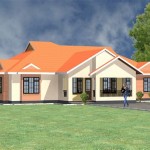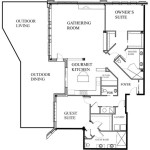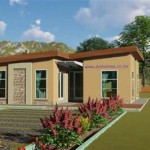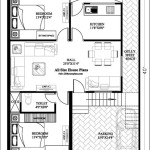Open Plan House Design: A Comprehensive Guide to the Essential Aspects
Open plan house design has become increasingly popular in recent years, offering a spacious and airy feel to homes of all sizes. This design approach involves combining multiple functional areas, such as the living room, dining room, and kitchen, into one large, open space. While open plan living can provide many benefits, it's essential to carefully consider the key aspects to achieve a functional and aesthetically pleasing design.
Floor Plan and Layout
The floor plan and layout of an open plan house are crucial for creating a cohesive and functional space. It's important to consider the flow of traffic and ensure that each area has a designated purpose while maintaining a sense of connection. Defining different zones using furniture, rugs, and lighting can help create distinct spaces within the open floor plan.
Lighting and Natural Ventilation
Lighting plays a vital role in open plan homes, as it helps define different areas and create the desired ambiance. A combination of natural and artificial light is essential. Large windows and skylights maximize natural light, while recessed lighting, pendants, and floor lamps provide additional illumination. Proper ventilation is also crucial to maintain air circulation and reduce the buildup of cooking odors.
Furniture and Decor
Furniture selection is critical in open plan design. Choose pieces that are proportionate to the size of the space and allow for easy movement. Modular furniture and multifunctional items can help create flexible and adaptable spaces. The choice of decor should complement the overall style of the home and help define different areas within the open plan.
Storage and Clutter Control
Storage is essential in any home, and open plan designs require careful planning to avoid clutter. Utilize built-in storage solutions, such as shelves, cabinets, and drawers, to maximize vertical space. Multi-purpose furniture, like ottomans with storage compartments, can also provide additional storage and seating.
Privacy and Noise Control
While open plan living encourages social interaction, it's essential to consider privacy and noise control. Strategic placement of furniture, room dividers, or curtains can create semi-private areas for activities like sleeping or working. Acoustic panels and rugs help absorb sound and reduce noise levels.
Maintaining Harmony
In an open plan design, maintaining a sense of harmony and cohesion is vital. Choose a color scheme that flows throughout the different areas and use similar materials to create a unified look. Avoid overcrowding the space and ensure that each element contributes to the overall design aesthetic.
Conclusion
Open plan house design offers a spacious and modern aesthetic that can enhance the functionality and enjoyment of a home. By carefully considering the essential aspects, such as floor plan, lighting, furniture, storage, privacy, and harmony, you can create an open plan space that meets your needs and preferences. Embrace the flexibility and social opportunities that open plan living provides while maintaining a cohesive and comfortable design.

House Design Trends What S Popular In Cur Floor Plans Extra Space Storage

Modern Open Floor House Plans Blog Eplans Com

Pros And Cons Of An Open Concept Floor Plan Generation Homes Nw

30 Gorgeous Open Floor Plan Ideas How To Design Concept Spaces

Designing The Perfect Open Concept Floor Plan For Modern Living
:max_bytes(150000):strip_icc()/1660-Union-Church-Rd-Watkinsville-Ga-Real-Estate-Photography-Mouve-Media-Web-9-77b64e3a6fde4361833f0234ba491e29.jpg?strip=all)
20 Open Floor House Plans Built For Entertaining

Filling The Space 8 Interior Design Tips For An Open Floor Plan Fusion Furniture Inc

Open Floor Plans Build A Home With Smart Layout Blog Dreamhomesource Com

The History Of Open Floor Design Interior Designers At Asheville S

7 Reasons Why To Use An Open Floor Plan My Modern Home








